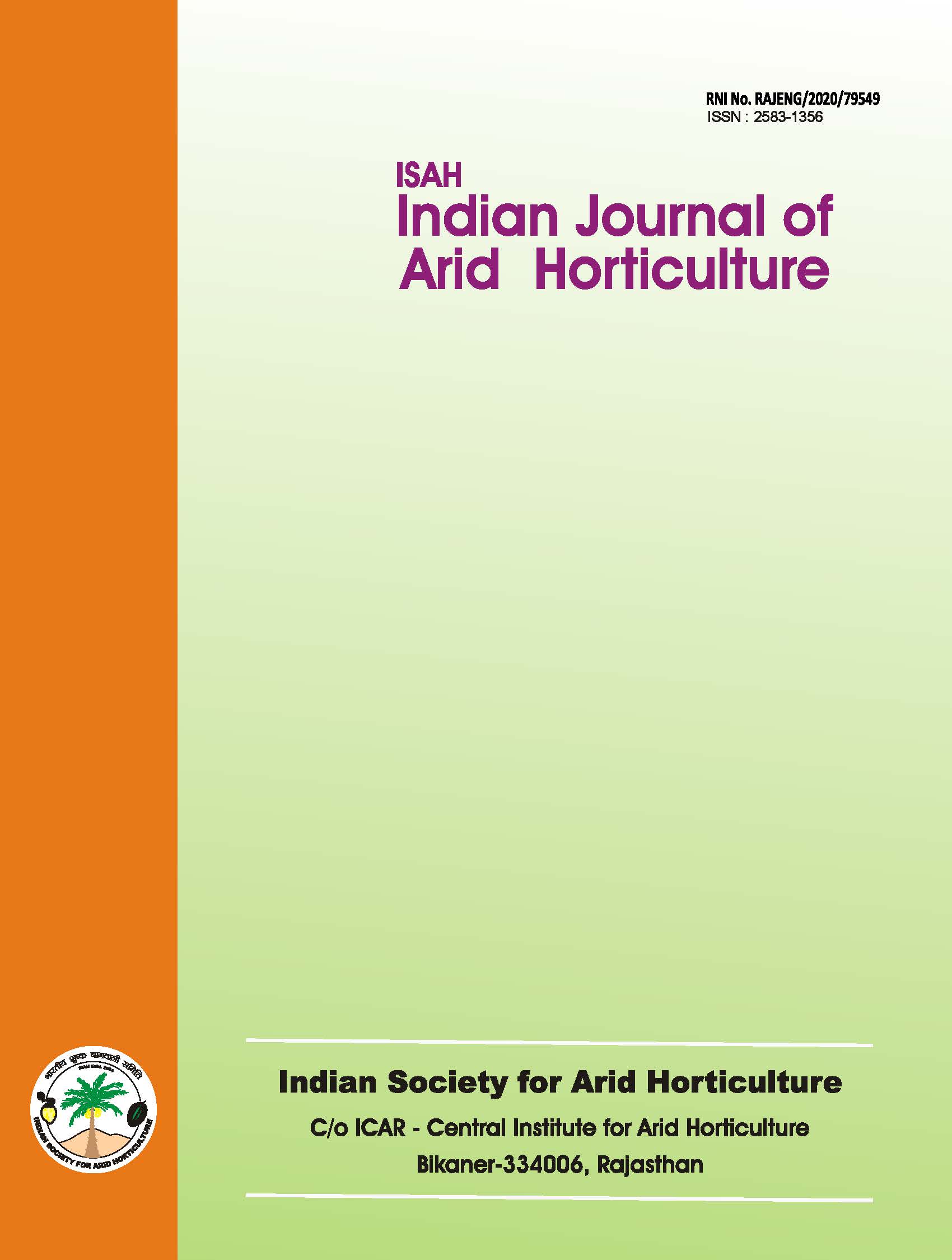Proximate composition of indigenous fruits and vegetables grown in tribal region of Western India
Keywords:
roots, tubers, indigenous, tribal, ashAbstract
The nutritive value of indigenous fruits (11), green leafy vegetables (12), other vegetables (11) and roots and tubers (8) of western India were analysed in terms of protein, fat, fiber, ash, carbohydrates and energy. The study concluded that the different indigenous fruits and vegetables consumed in tribal areas are rich source of protein and fat and may be used in daily diet. Hence these indigenous fruits and vegetable may be recommended to achieve sustainable food and nutritional security.Downloads
References
Gopalan, C., Rama Shastri and B.V. Balasubramanian. 2007. Nutritive Value of Indian Foods. NIN, ICMR.
Hyderabad.
Gupta, S., A. J. Lakshmi, M.N. Manjunath and J. Prakash.
2005. Analysis of nutrient anti-nutrient content of underutilized green leafy vegetables. J. Food. Sci. Tech., 38: 339-345.
Nath, K.K., P. Deka and S. K. Borthakur. 2007. Ethnomedicinal aspects of some weeds from Darrang district of Assam. Ethnobotany, 19:82-87. Nazarudeen, A. 2010. Nutritional composition of some lesser- known fruits used by ethnic communities and local folks of Kerela. Indian. J. Traditional Knowl., 9:398- 402. Bhati, D. and S. Jain. 2015. Weeds: An uncommon source of
nutrients used by tribal community. Indian J. Ecology, 42(1) pp 86-89.
NIN, 2003. A Manual of Laboratory Techniques. Edited by Raghuramula, N., Nair, K. and Mand Kalyanasunderam, S. National Institute of Nutrition. ICMR. Hyderabad.

